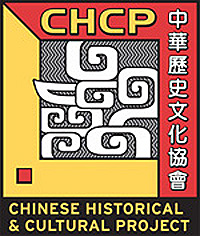|
- Home
- Definitions
Definitions
Formal Document
“The matchmaker must carry the proposal to the girl’s family and ask for the young lady’s ‘eight characters’ (the year, month, day of the month and hour of the boy’s birth and of the girl’s birth) and later conduct the negotiations concerning the gifts. If the girl’s family hands out the ‘eight characters’, this is a sign of preliminary consent.”
Hsu 1971, 84
Return to Chinese Wedding Traditions
 Favorable
Favorable
“It is a system similar to the European horoscope, which tells, among other things, the ‘suitability’ of matches. The diviner receives a fee, which in 1941 was $20 per match.”
“If the family is really determined to put the match through, they can always consult several diviners, whose reports are bound to conflict with each other. Not that the families concerned take the system of divination lightly, but they can always find something wrong with the diviner if he does not give the desired answer.”
Hsu 1971, 85
Return to Chinese Wedding Traditions
 Betrothal
Betrothal
The engagement “involved an exchange of gifts which, rather than being merely ceremonial, was an integral part of the contract being made between the two families. This was especially so because the girl’s family, losing her to another lineage forever, sought compensation that included a cash bride’s price. Whatever arrangements were finally negotiated therefore reflected the worth of the girl and her family. So important was this step that, to all intents and purposes, its completion constituted the de facto completion of the marriage. Even if death intervened during the engagement period, which might last a year or longer, it would probably be necessary for the girl, if she survived her fiancé, to join the lineage that had contracted for her services. Conversely, the boy would probably need to complete the ceremony so that his deceased partner’s soul could have a secure place within his family’s ancestral cult, though this would not prevent him from marrying a second, living bride.”
Jochim 1986, 164
Return to Chinese Wedding Traditions
 Bridal Bed
Bridal Bed
“Once placed side by side and installed in their bedroom (their private quarters), the couple form a unit endowed with its own economic personality and a promise of greater independence to come. It is one of the striking features of Chinese family organization that while a man has little in the way of individual property rights until he eventually takes out his share of the family property on division, when he marries he becomes part of a conjugal property-owning unit endowed with furnishings of the bedroom brought by the bride and paid for to a large extent out of the money earlier passed from the groom’s family to the girl’s. Within the conjugal unit the bride herself holds as her own property such personal wealth (jewelry and cash, but even sometimes right to income from land) as she has acquired on her own as a maiden or been presented with by her family and friends.”
Freedman 1970, 182
Return to Chinese Wedding Traditions
 Hair Dressing
Hair Dressing
“The ‘Six Rites’ are not concerned with one essential feature of modern Chinese marriage: ‘initiation’...Each in his own house (usually the night before the day the bride is to be conveyed), the girl has her hair ritually put up, the boy is ‘capped’ or given a courtesy name. By that solemn act the married pair are rendered fit to enter into the conjugal tie of marriage, both having been made ready for the circumscribed emancipation that the transfer of the bride will bring.”
Freedman 1970, 181
Return to Chinese Wedding Traditions
 Red
Red
“...in China, the color red not only serves to express joy but also, in cases like this, to ward off evil influences...”
“...white is considered to be the opposite of red and is used to express sorrow.”
Jochim 1986, 166-167
Return to Chinese Wedding Traditions
 Carried
Carried
“When at last the girl is dispatched to the husband’s house we see in action the most complex set of symbols and ritual prescriptions and proscriptions, a very few of which we may note. To reach the sedan chair that awaits her..., the bride must either be borne out of the house or walk upon the covered ground. Again, when she leaves the sedan chair at her destination her feet must not touch the bare earth — between one house and the other she is, so to speak, in a state of suspense.”
Freedman 1970, 183
Return to Chinese Wedding Traditions
 Protect Her From Evil Influence
Protect Her From Evil Influence
“Sealed inside the chair, which has been inspected before her installation in it to insure its freedom from evil, the bride sits armed with instruments to ward off malign influences and with symbols of peace. The world of humans, spirits, animals, and things is replete with threats to her and her fertility.”
Freedman 1970, 184
Return to Chinese Wedding Traditions
 The Physical Movement
The Physical Movement
“In the rites of marriage time recedes, for what is crucial is physical movement, symbolized above all in the transfer of the bride but realized also in the many comings and goings between the two houses that both precede and follow the central event. Space is now of the essence. It is no wonder, then, that in the People’s Republic, in the face of fierce attacks against superstitious ceremonialism, people persist in practicing the central rite of the traditional wedding (the transfer of the bride in her sedan chair) by conveying her on a bicycle. Walking, even when practical, is just not good enough; a dramatic movement must be made.”
Freedman 1970, 181
“if the two homes are near each other, the general practice is to have the procession cover a long, circuitous route, so that more people may have an opportunity of looking at it.”
Hsu 1971, 93
Return to Chinese Wedding Traditions

